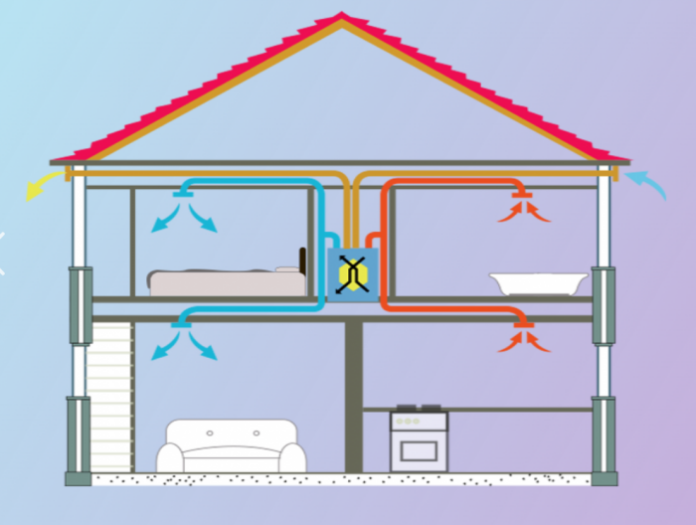A common feature of energy-efficient homes is heat recovery ventilation (HRV) systems. These devices expel stale air from the home, replacing it with fresh, re-heated air from the outside. Because of how they work, they provide better indoor air quality than most other ventilation systems while keeping your home’s energy consumption low.
For an HRV system to work as expected in your home, it needs to be the right system, and it needs to be installed properly. Below, we will look at how to go about choosing and installing the best HRV for your home.
Calculate The Required Airflow

It is very important that you know how much airflow you need to ensure that you select a ventilation system that will be adequate for your home. The airflow required is calculated using a formula that takes the home’s size as well as the number of bedrooms in the house into account.
To calculate the rate of airflow you need in cubic feet per meter, use the following formula:((number of bedrooms X 7.5) + 1) + (square footage of area to be ventilated X 0.03)
Using this formula will give you a rough estimate of the required airflow for your house. If you need a more precise measurement, there are calculators available online to help with that.
Select Efficient Equipment
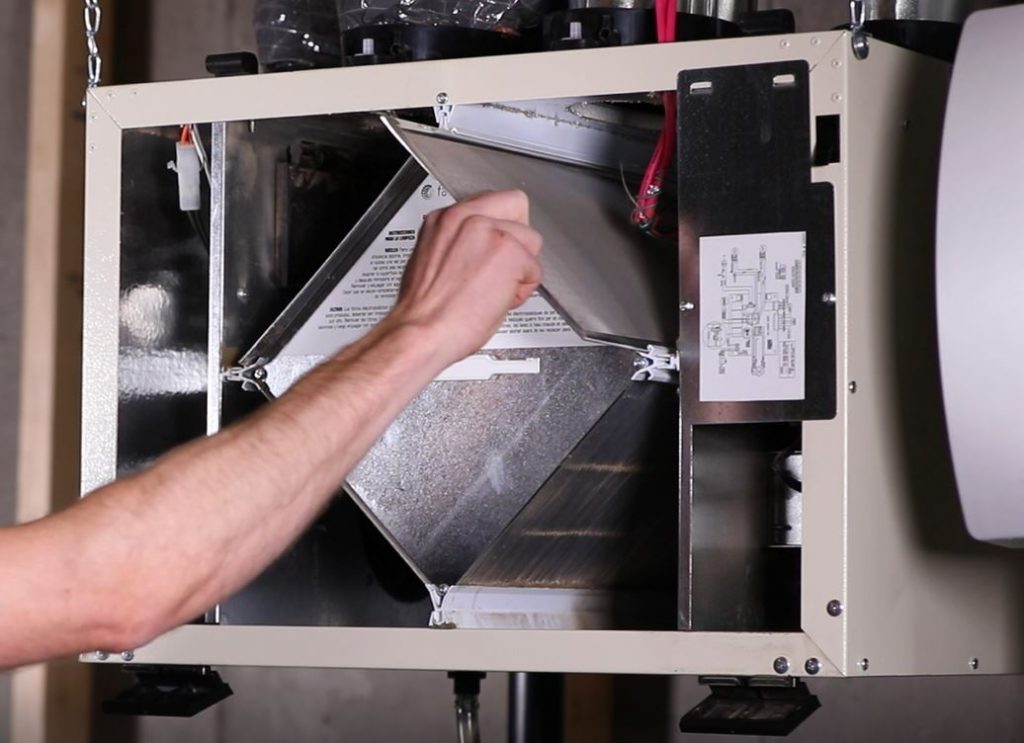
HRVs run throughout the day, which can translate into thousands of pounds in electricity for you if you do not choose an efficient system. Ideally, the HRV system should satisfy your home’s airflow needs without using too much power.
To ensure that the system you install meets both of these criteria, ensure that the equipment is tested and certified for use in a home of your size while being energy efficient. You can compare different heat recovery systems online at BPCventilation.ie choose from the available systems depending on your home’s size.
You can find the heat recovery efficiency on most product pages but if you cannot, you can use the HVI directory to find out what the heat recovery efficiency of a certain HRV system is. Ideally, you should choose a system that has a recovery efficiency of at least 80%.
Place The Exhaust Points in Ideal Locations
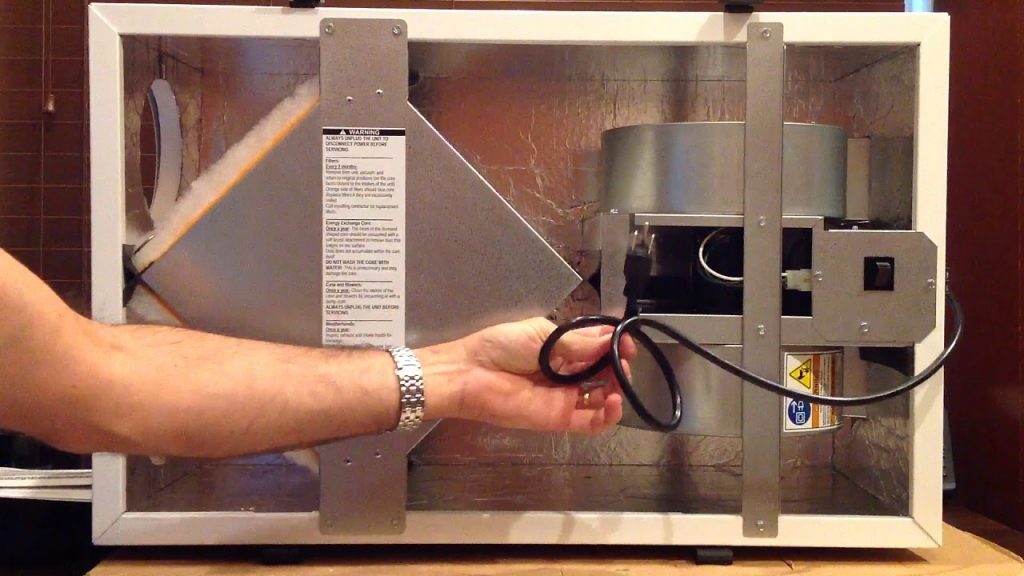
Apart from introducing heated air into the home, the main point of installing an HRV system is to remove humid air from the home. To achieve this optimally, place the exhaust points in areas where there is high humidity such as the kitchen, bathroom, or utility room.
Doing this allows for even more heat recovery from areas that have high moisture and humidity levels. An HRV can also be used to replace ventilation fans in areas such as the bathroom to not only save money but to also ensure a pleasant environment. When installing exhaust points in the kitchen, ensure they are placed at least six feet from any cooking areas.
Placing the exhaust point here eliminates the need to replace the range hood entirely. Your habits as well as how you use the kitchen will dictate if you would like to keep a standard range hood or remove it and have the HRV work alone to remove moisture and odours from the kitchen.
Choose Ideal Fresh Air Supply Points
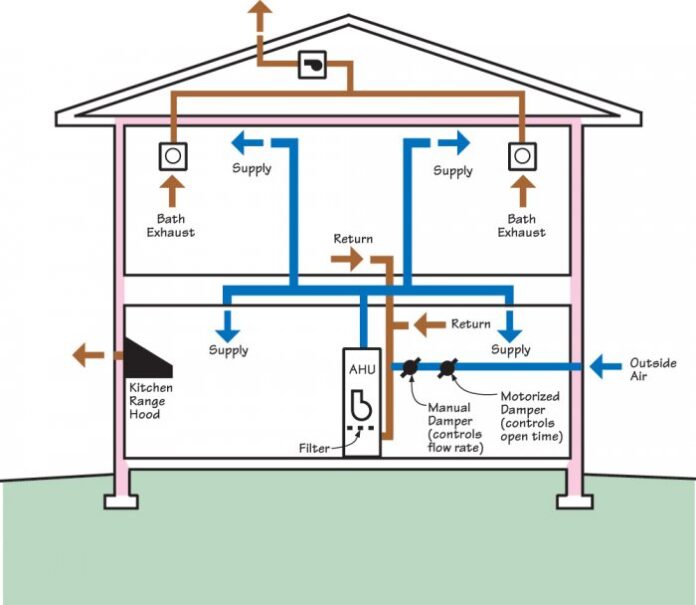
There should be a considerable distance between exhaust and supply points. This ensures a fresh mix of air throughout the house. Ideal locations for the supply points are the bedroom and living rooms. Remember that since the incoming air is often below the room temperature, putting the supply points too close to where people sit can make some areas uncomfortable to sit.
It is therefore a good idea to place the supply (incoming) vents high where the fresh air mixes with warmer air and is not noticed. For supply points in the bedroom, you can place them in a closet where the fresh air mixes slowly with the warmer air.
Have Dedicated Duct Systems for the HRV
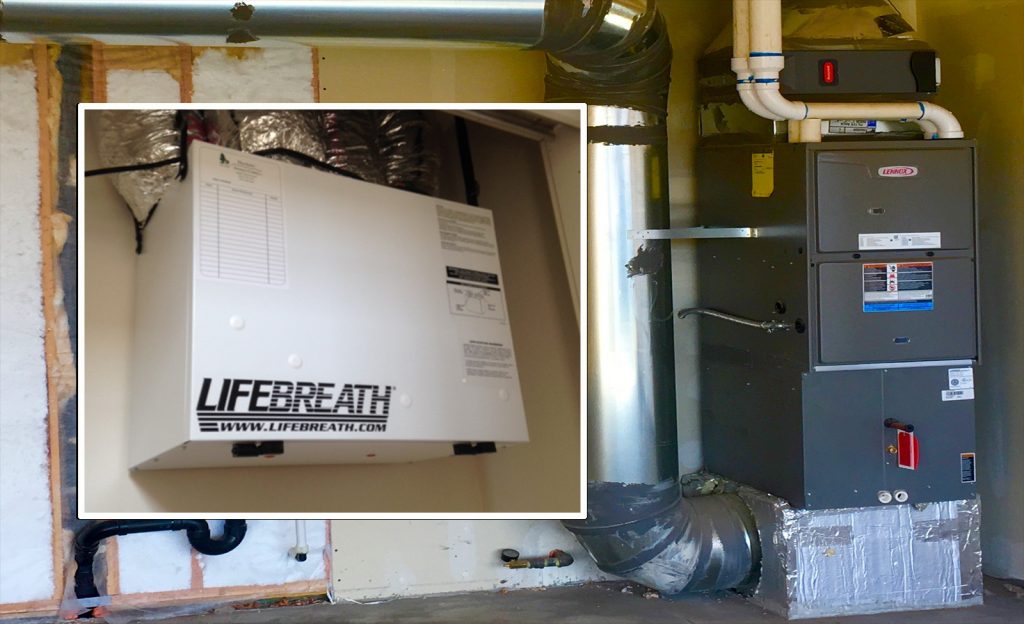
A lot of people skip this step, but it is advisable that the HRV has a dedicated duct system, especially if you choose ductless or hydronic heat pumps. These pumps mix the air throughout the house and therefore need access to air in all areas of the house.
If your home already has forced air heating and cooling systems, you can use their ducts for the HRV. These ducts are likely installed with the best air distribution patterns in mind and reusing them can save you a lot of time and money on labour and materials.
If you are integrating your HRV with a forced-air system, it is always a good idea to get in touch with a professional to do proper planning, install the proper controls, and ensure that both systems are installed correctly so they can work together well.
HRVs and ERVs: What is the Difference?
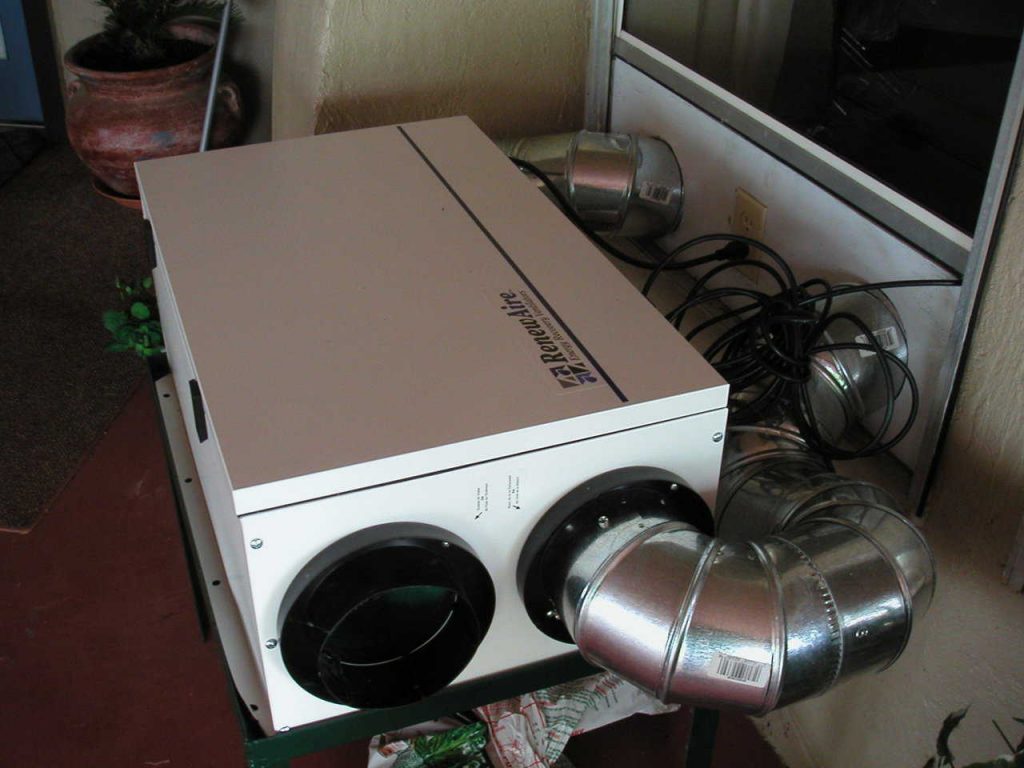
The information about choosing and installing HRVs above also applies to ERVs (Energy Recovery Ventilation systems). Both of these systems perform well in different climate zones, but there are differences in how they operate. HRVs transfer sensible heat between two air streams, the incoming and outgoing air streams.
Sensible heat is the heat you feel when there is a change in air temperature. Air contains moisture that also holds energy. ERVs can transfer both sensible heat and moisture between two air streams, which takes the energy in the moisture with it. Because of this additional energy, ERVs usually have higher efficiency ratings than HRVs.
But, why would you use an ERV that returns some water vapour into the house? This function of ERVs can come in handy in drier climates where every bit of water moisture and humidity in the house helps.
Heat recovery energy systems are a great way to keep your home cool or warm while keeping your energy bills low. Alternatively, you can use an energy recovery system in drier areas to achieve all these plus keep the air in your house from getting too dry.

